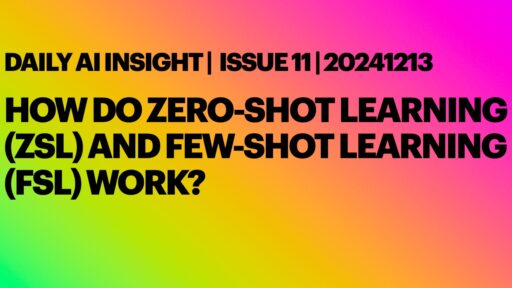Transfer learning has revolutionized the way AI models adapt to new tasks, enabling them to generalize knowledge across domains. At its core, transfer learning allows models trained on vast datasets to tackle entirely new challenges with minimal additional data or effort. Two groundbreaking techniques within this framework are Zero-Shot Learning (ZSL) and Few-Shot Learning (FSL). ZSL empowers AI to perform tasks without ever seeing labeled examples, while FSL leverages just a handful of examples to quickly master new objectives. These approaches highlight the versatility and efficiency of transfer learning, making it a cornerstone of modern AI applications. Let’s dive deeper into how ZSL and FSL work and why they’re transforming the landscape of machine learning. 1. What Is Zero-Shot Learning (ZSL)? Simple Example Imagine a model trained to recognize “cats” and “dogs,” but it has never seen a “tiger.” When you show it a tiger and ask, “Is this a tiger?” it can infer that it’s likely a tiger by reasoning based on the similarities and differences between cats, dogs, and tigers. How It Works Semantic Embeddings ZSL maps both task descriptions and data samples into a shared semantic space. For instance, the word “tiger” is embedded as a vector, and the model compares it with the image’s vector to infer their relationship. Pretrained Models ZSL relies heavily on large foundation models like GPT-4 or CLIP, which have learned extensive general knowledge during pretraining. These models can interpret natural language prompts and infer the answer. Natural Language Descriptions Clear, descriptive prompts like “Is this a tiger?” help the model understand…
Secure by Design Part 1: STRIDE Threat Modeling Explained
Kubernetes Control Plane Components Explained
A 12 Factor Crash Course in Python: Build Clean, Scalable FastAPI Apps the Right Way
Golang Range Loop Reference - Why Your Loop Keeps Giving You the Same Pointer (and How to Fix It)
Terraform Associate Exam: A Powerful Guide about How to Prepare It
Terraform Meta Arguments Unlocked: Practical Patterns for Clean Infrastructure Code
A 12 Factor Crash Course in Python: Build Clean, Scalable FastAPI Apps the Right WayKubernetes Control Plane Components ExplainedSecure by Design Part 1: STRIDE Threat Modeling Explained
Golang Range Loop Reference - Why Your Loop Keeps Giving You the Same Pointer (and How to Fix It)
Ultimate Kubernetes Tutorial Part 2: DNS server and NTP server Configuration
Install Azure-Cli on Mac
Vue: Secrets to Resolving Empty index.html in WebHistory
Ray Serve: The Versatile Assistant for Model Serving
Knowledge Distillation: How Big Models Train Smaller Ones
Newest comment
